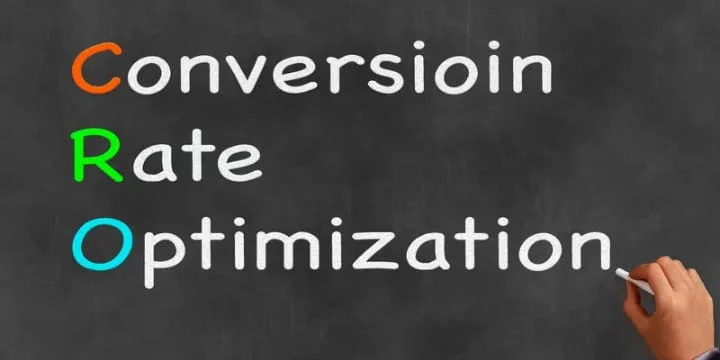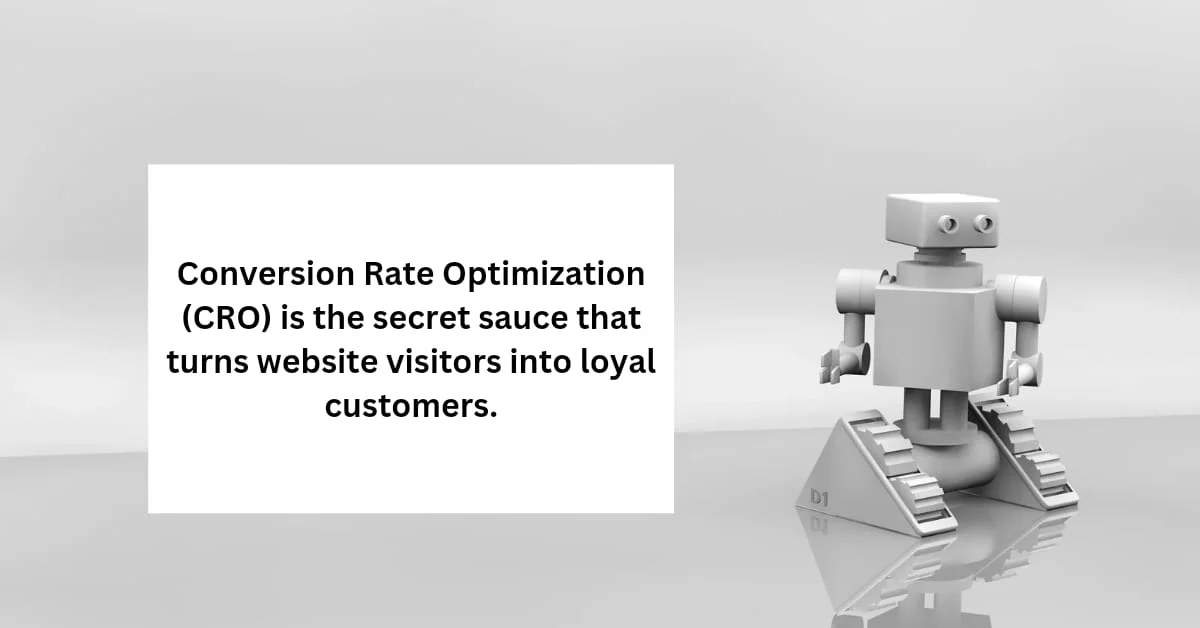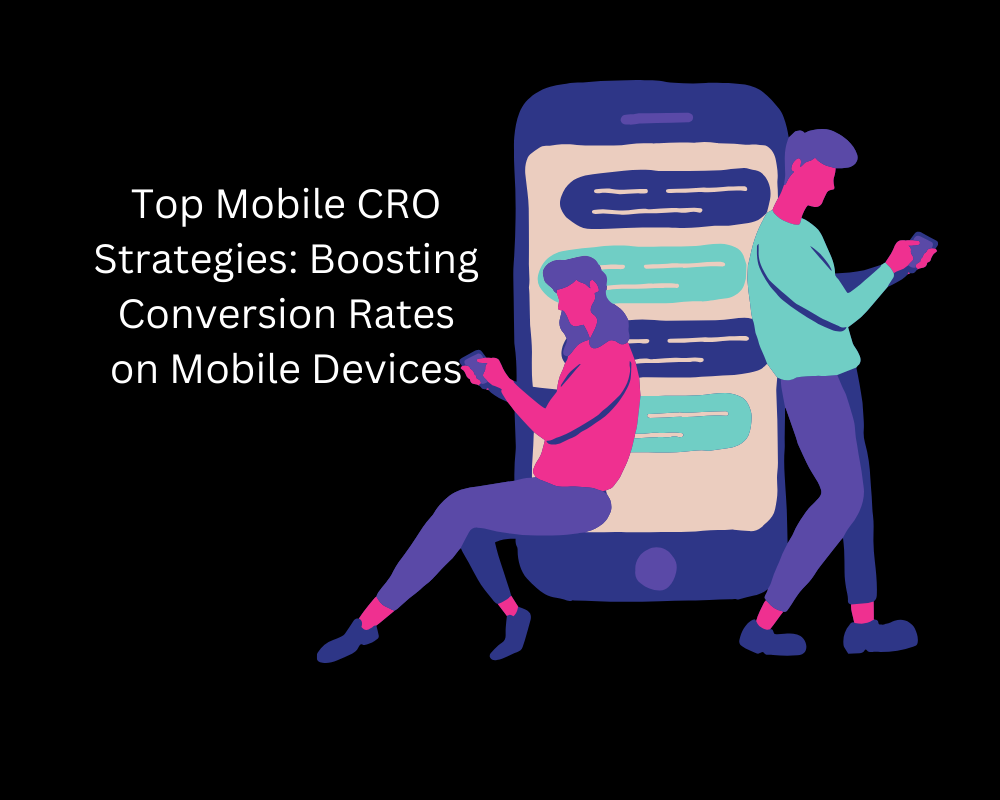In today’s digital era, small businesses are facing unprecedented challenges in the marketing landscape. As digital advertising costs continue to soar, many small enterprises are struggling to keep up. The competition for online visibility is fierce, and the price to secure a top spot in search results or social media feeds is higher than ever. For small businesses with limited budgets, these rising costs can quickly become unsustainable, threatening their very survival.
But there is a powerful solution that can help small businesses not only survive but thrive in this environment—Conversion Rate Optimization (CRO). While many businesses focus primarily on driving traffic through costly ads, the real game-changer lies in maximizing the value of that traffic. CRO offers a cost-effective strategy that allows small businesses to do just that. By focusing on converting existing visitors into customers, rather than solely on attracting new ones, small businesses can significantly increase their return on investment (ROI) and reduce their dependency on expensive advertising.
In this article, we will explore how CRO can be a transformative tool for small businesses, especially in the context of rising digital advertising costs. We’ll dive into the essential CRO strategies that can help your business not only cut down on unnecessary ad spending but also build a more sustainable and profitable marketing approach.
The Rising Costs of Digital Advertising
Over the past decade, digital advertising has become the cornerstone of modern marketing strategies. Platforms like Google, Facebook, and Instagram offer unparalleled reach and targeting capabilities, making them go-to options for businesses looking to connect with their audiences. However, as these platforms have grown in popularity, so too have the costs associated with advertising on them.

**1. The Escalating Price of Digital Ads
Recent data reveals a significant upward trend in digital advertising costs. For instance, the cost-per-click (CPC) on Google Ads has risen sharply in many industries. This increase is driven by higher competition, as more businesses vie for the same keywords and ad placements. Similarly, Facebook’s advertising platform has seen a rise in cost-per-thousand-impressions (CPM), reflecting the growing demand for limited ad space.
**2. The Impact on Small Businesses
For large corporations with substantial marketing budgets, these rising costs may be manageable. However, for small businesses, they present a serious challenge. With limited financial resources, small businesses often find it difficult to compete with larger players who can outbid them for prime ad positions. As a result, small businesses may see their ad campaigns yielding fewer results, or worse, they may be priced out of the market altogether.
**3. The Profitability Dilemma
As advertising costs climb, the return on ad spend (ROAS) becomes a critical metric. Unfortunately, many small businesses are finding that their ROAS is shrinking. Higher ad costs mean that even if a campaign is successful in driving traffic, the profitability of that traffic is reduced. For some, the cost of acquiring a new customer through digital ads now outweighs the revenue that customer generates, leading to a negative ROI.
In this landscape, small businesses must find ways to stretch their marketing dollars further. This is where Conversion Rate Optimization (CRO) comes into play. By focusing on converting a higher percentage of visitors who already land on their website, businesses can counteract the rising cost of driving new traffic. Instead of constantly chasing new customers at increasingly higher costs, CRO allows businesses to make the most of their existing traffic, ensuring every dollar spent on advertising is used to its fullest potential.
What is Conversion Rate Optimization (CRO)?
Conversion Rate Optimization (CRO) is the process of enhancing a website or landing page to increase the percentage of visitors who complete a desired action, such as making a purchase, signing up for a newsletter, or filling out a contact form. While the concept might seem straightforward, the practice of CRO involves a deep understanding of user behavior, data analysis, and strategic testing to identify and implement changes that yield the best results.

**1. Defining CRO: Beyond Just Traffic
Many businesses focus heavily on driving traffic to their websites through various channels, such as paid advertising, social media, and search engine optimization (SEO). While attracting visitors is important, the real value lies in converting these visitors into customers. CRO shifts the focus from just generating traffic to maximizing the efficiency of that traffic. In essence, it’s about getting more value out of the traffic you already have, rather than spending more to attract additional visitors.
**2. Key Components of CRO
- User Experience (UX) Design: At the heart of CRO is user experience. A website that is easy to navigate, visually appealing, and fast-loading is more likely to convert visitors. UX design involves everything from the layout and color scheme to the clarity of the content and the ease of finding key information.
- A/B Testing: A/B testing, or split testing, is a critical CRO tool. It involves creating two versions of a webpage or element (such as a headline, button, or image) and testing them against each other to see which one performs better. This data-driven approach allows businesses to make informed decisions about what changes will have the most positive impact on conversion rates.
- Landing Page Optimization: Landing pages are often the first point of contact between a business and potential customers. Optimizing these pages for specific campaigns can significantly increase conversion rates. This might include tweaking the headline to match the ad copy, simplifying the form fields, or adding compelling visuals and calls-to-action (CTAs).
**3. Traffic vs. Conversion: Understanding the Difference
It’s essential to distinguish between driving traffic and converting traffic. While traffic generation is about bringing people to your website, conversion is about getting those visitors to take a specific action. High traffic doesn’t necessarily equate to high sales if the website isn’t optimized to convert those visitors. CRO ensures that your site is not just a digital billboard but a finely tuned machine designed to turn visitors into customers.
By implementing effective CRO strategies, small businesses can significantly improve their return on investment (ROI). Every visitor becomes an opportunity, and through careful optimization, businesses can maximize these opportunities, turning more leads into paying customers without the need to increase their ad spend.
Why CRO is Essential for Small Businesses
For small businesses navigating the complex world of digital marketing, Conversion Rate Optimization (CRO) is not just a strategy—it’s a necessity. As digital advertising costs continue to rise, the ability to maximize the value of each visitor becomes increasingly crucial. Here’s why CRO is particularly vital for small businesses:

**1. Maximizing ROI: More Bang for Your Buck
One of the most compelling reasons for small businesses to invest in CRO is the potential for a higher return on investment (ROI). When digital ad costs are high, every dollar spent needs to work harder. CRO helps ensure that your marketing budget is being used as efficiently as possible by increasing the likelihood that visitors will convert into customers. Instead of spending more on ads to drive additional traffic, businesses can focus on making the most of the traffic they already have, leading to a better ROI.
**2. Cost-Effectiveness: Reducing Dependence on High-Cost Ads
As advertising costs rise, it becomes increasingly difficult for small businesses to compete with larger companies that can afford to outbid them. CRO offers a more cost-effective alternative. By improving conversion rates, small businesses can achieve their goals without needing to continuously increase their ad spend. This approach not only saves money but also reduces reliance on volatile and often unpredictable ad markets.
**3. Building a Sustainable Business Model
A business model heavily reliant on paid advertising is inherently vulnerable to fluctuations in ad costs and competition. By focusing on CRO, small businesses can build a more sustainable marketing strategy. Converting a higher percentage of website visitors allows businesses to generate more revenue without increasing their customer acquisition costs. Over time, this can lead to more stable growth and a stronger market position, even in the face of rising ad costs.
**4. Enhancing Customer Experience and Loyalty
CRO isn’t just about increasing sales; it’s also about improving the overall user experience (UX) on your website. A seamless, enjoyable online experience can lead to higher conversion rates, but it also builds trust and encourages repeat business. By prioritizing CRO, small businesses can create a more loyal customer base, which is essential for long-term success. Happy customers are more likely to return and recommend your business to others, amplifying the impact of your CRO efforts.
In an environment where every marketing dollar counts, CRO stands out as a powerful tool for small businesses. It enables them to compete more effectively, reduce costs, and build a more resilient business model—all while improving the customer experience.
Effective CRO Strategies for Small Businesses
Implementing Conversion Rate Optimization (CRO) strategies can significantly improve a small business’s ability to convert visitors into customers, thereby maximizing the value of each visitor and ensuring a higher return on investment (ROI). Below are some of the most effective CRO strategies tailored for small businesses:

**1. A/B Testing: Experimenting for Success
A/B testing, or split testing, is one of the most powerful tools in the CRO toolkit. This method involves creating two or more variations of a webpage or a specific element (such as a headline, call-to-action button, or image) and testing them against each other to determine which one performs better. For example, a small business might test two different versions of a product page—one with a simple layout and another with more detailed information—to see which results in more sales.
- Tip: Start by testing elements that are most likely to impact conversion rates, such as headlines, CTAs, and images. Even small changes can lead to significant improvements in performance.
**2. User Experience (UX) Improvements: Making the Website User-Friendly
The user experience (UX) on your website is a critical factor in converting visitors. A website that is easy to navigate, visually appealing, and quick to load will naturally lead to higher conversion rates. Small businesses should focus on creating a seamless and intuitive user journey, from the moment a visitor lands on the site to the point of conversion.
- Tip: Regularly review and optimize your site’s loading speed, mobile responsiveness, and overall design. Consider using heatmaps and user session recordings to understand how visitors interact with your site and identify any pain points.
**3. Landing Page Optimization: Tailoring for Specific Campaigns
Landing pages are often the first point of contact for potential customers who come through digital ads, emails, or social media campaigns. These pages should be highly targeted and relevant to the specific campaign they are associated with. Effective landing page optimization involves aligning the content and design with the expectations set by the ad or link that brought the visitor there.
- Tip: Ensure that your landing page headlines match the messaging of your ads and that the page includes a clear, compelling call to action. Simplify forms and reduce any friction that might prevent visitors from converting.
**4. Personalization: Customizing the User Experience
Personalization involves tailoring the content and experience on your website to individual visitors based on their behavior, demographics, or past interactions with your business. This could mean showing returning visitors a personalized welcome message, suggesting products based on previous purchases, or offering location-specific content.
- Tip: Use tools that track user behavior and preferences to deliver personalized experiences. Even simple personalization, such as greeting visitors by name or showing recently viewed items, can significantly enhance conversion rates.
**5. Analytics and Data-Driven Decisions: The Foundation of Effective CRO
Effective CRO relies on data. By leveraging tools like Google Analytics, small businesses can gain valuable insights into how visitors are interacting with their site, where they are dropping off, and what is driving conversions. This data forms the foundation for making informed, strategic decisions that can improve conversion rates.
- Tip: Regularly monitor key metrics such as bounce rate, average session duration, and conversion paths. Use this data to identify areas for improvement and to track the effectiveness of your CRO efforts.
By implementing these strategies, small businesses can optimize their websites to convert more visitors, thus making every marketing dollar go further. These techniques not only enhance immediate conversions but also contribute to long-term customer satisfaction and loyalty.
Finally
In a digital landscape where advertising costs are steadily rising, small businesses must find innovative and cost-effective strategies to stay competitive. Conversion Rate Optimization (CRO) offers a powerful solution, allowing businesses to maximize the value of their existing traffic rather than constantly chasing new visitors at higher costs. By focusing on optimizing the user experience, conducting A/B testing, and tailoring landing pages to specific campaigns, small businesses can significantly improve their conversion rates and, ultimately, their return on investment (ROI).
CRO is not just about increasing sales—it’s about creating a sustainable business model that can thrive even in the face of rising digital advertising costs. By investing in CRO, small businesses can build a more resilient marketing strategy, enhance customer satisfaction, and ensure long-term success.
In today’s competitive market, CRO is not just an option; it’s a necessity. As digital advertising becomes more expensive, the businesses that focus on optimizing conversions will be the ones that stand out and succeed.













